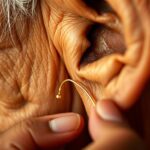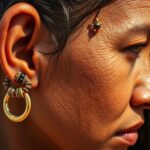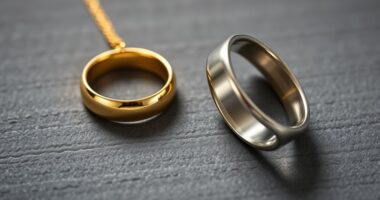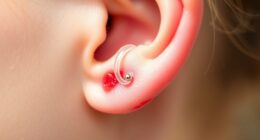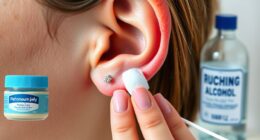Body piercing is an ancient tradition with deep cultural roots, symbolizing status, spirituality, or rites of passage across various societies. Today, it includes many types like ear, nose, cartilage, and body piercings, each with its own healing process and safety needs. It’s important you choose professional practitioners and follow proper aftercare to minimize risks. If you want to fully understand its history, significance, and how to get started safely, there’s more to explore.
Key Takeaways
- Body piercing has ancient cultural roots, symbolizing status, spirituality, and rites of passage across diverse civilizations.
- Common types include ear, nose, facial, and body piercings, each with unique healing times and aftercare needs.
- Proper safety measures, such as sterilized equipment and professional services, are essential to prevent infections.
- Understanding the cultural significance of piercings enriches their meaning beyond aesthetics.
- Informed decision-making involves knowing healing processes, aftercare, and how trends influence choices.
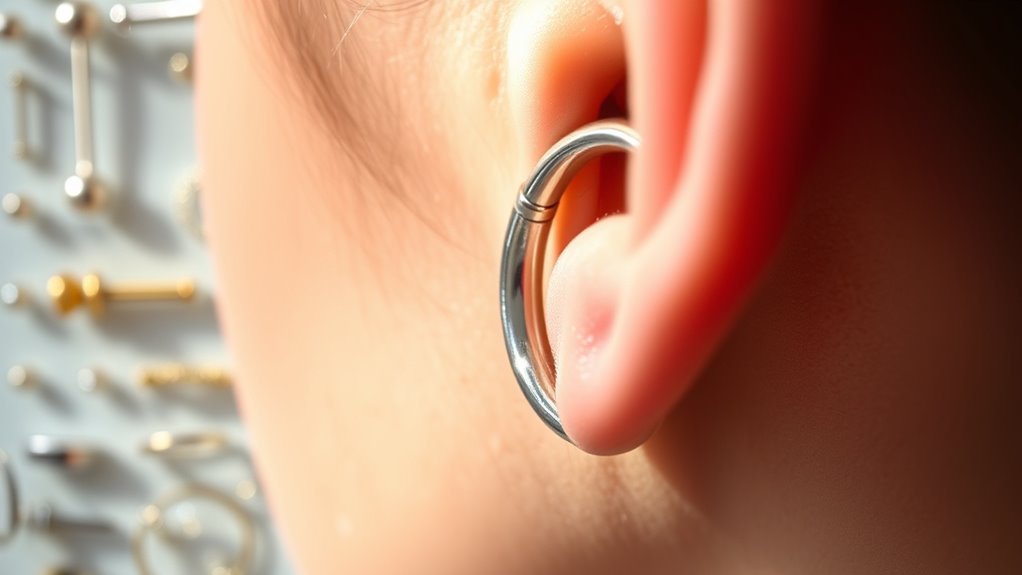
Body piercing is a popular form of self-expression that has been practiced for thousands of years across different cultures. Throughout history, people have used piercings to symbolize status, spirituality, beauty, or rites of passage. In many cultures, specific piercings hold deep cultural significance, representing identity, social rank, or tribal affiliation. For example, ancient Egyptians adorned themselves with earrings and nose rings, while certain African tribes used lip plates and stretched earlobes as marks of maturity or beauty. Understanding this cultural context enriches your appreciation for body piercing and highlights its importance beyond mere aesthetics.
Body piercing’s cultural roots deepen its significance beyond aesthetic appeal.
When considering body piercing, it’s vital to prioritize safety precautions. While piercings can be beautiful forms of self-expression, improper techniques or unsanitary practices can lead to infections, allergic reactions, or scarring. Always choose a professional, reputable piercer who follows strict hygiene standards, such as using sterilized needles and equipment. Don’t hesitate to ask questions about their experience, sterilization methods, and aftercare instructions. Proper aftercare is indispensable for healing and avoiding complications; this includes keeping the pierced area clean, avoiding harsh chemicals, and resisting the urge to touch or twist the jewelry unnecessarily. Recognizing the importance of safety precautions helps ensure your piercing experience is positive and minimizes risks.
The types of body piercings you can choose from are diverse, ranging from ear piercings like lobe and cartilage, to facial piercings such as nostril, septum, or eyebrow. There are also body piercings like belly buttons, nipples, and surface piercings on various parts of your body. Each type has different healing times and specific aftercare needs, so understanding these factors helps you make informed decisions. For example, ear lobe piercings tend to heal faster than cartilage piercings, which require more careful maintenance. Trends come and go, but knowing the basics about each piercing type allows you to select the one that best fits your style and lifestyle. Additionally, understanding the cultural significance of certain piercings can deepen your appreciation and respect for their origins and meanings.
Frequently Asked Questions
How Long Does It Take for Body Piercings to Heal Completely?
It can take anywhere from a few weeks to several months for your piercing to heal completely, so don’t count your chickens before they hatch. The healing timeline varies depending on the piercing type and your body’s response. For some piercings, like earlobes, expect about 6-8 weeks, while cartilage piercings may take 4-12 months. Patience is key; follow aftercare instructions to make certain of a smooth piercing duration and full healing.
Are There Any Health Risks Associated With Body Piercing?
Yes, there are health risks with body piercing. You should be aware of infection prevention to avoid complications, as infections can cause swelling, redness, or more serious issues. Also, allergic reactions to metals like nickel are possible, leading to irritation or rash. Proper aftercare, choosing reputable piercers, and using high-quality materials help reduce these risks and keep your piercing safe and healthy.
What Are the Best Aftercare Practices for New Piercings?
Properly protect your new piercing with perfect practices. Keep the piercing clean by gently cleansing with saline solution, avoiding harsh chemicals. Apply healing ointments as recommended by your piercer to promote healing and prevent infection. Avoid touching the piercing with unwashed hands, and steer clear of irritants like jewelry that isn’t suitable. Following these steps helps *guarantee* your piercing stays pristine, promoting a smooth, speedy, and safe healing process.
Can Body Piercings Be Removed Without Scarring?
Yes, you can remove body piercings without scarring if you follow the healing process carefully. When you remove a piercing, scar tissue might form, especially if it’s been in for a long time or if you didn’t care for it properly. To minimize scarring, make sure the piercing is fully healed before removal, keep the area clean, and avoid picking at it. Proper aftercare helps reduce permanent marks.
How Do I Choose a Professional Piercer?
You should choose a professional piercer by checking their sterilization standards to guarantee a safe experience. Review their artist portfolio to see their skill level and previous work. Visit their studio to observe cleanliness and ask about certifications. Trust your instincts—select someone who maintains high hygiene standards, demonstrates professionalism, and makes you feel comfortable. A reputable piercer prioritizes your safety and offers guidance throughout your piercing journey.
Conclusion
Think of body piercing as a journey through a colorful garden, where each ornament you choose is a unique bloom that reflects your personality. As you explore its history and styles, remember that your piercings are like seeds planted in your story. Nurture them with care, and they’ll flourish as a vibrant expression of who you are. Embrace this art, and let your body become a living, evolving masterpiece.





